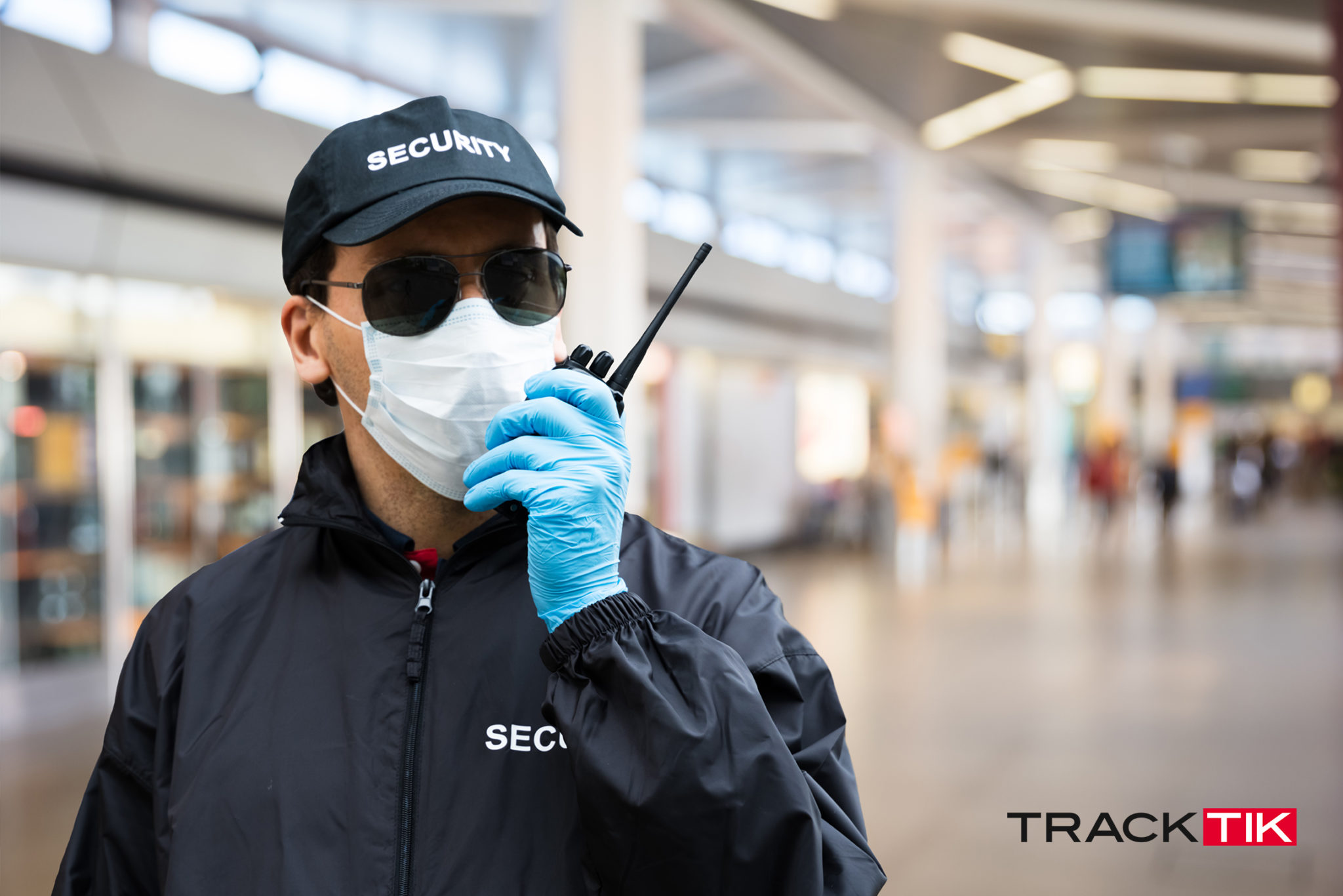In addition to providing safety for citizens in our communities, it is equally important to ensure that security officer safety is just as imperative as the safety of the communities they protect. Many security officers have put themselves at personal risk while doing their everyday duties over the last few months. For example, the very nature of the job influences their risk to COVID-19. Frontline workers like security officers often encounter conflict when trying to enforce safety guidelines. They also have to touch equipment and surfaces on a regular basis and handwashing facilities are often not available at the sites they patrol.
So how can security officers actively work to keep themselves healthy and safe while on duty?
There are several precautions security officers and their managers can take to create the safest working conditions possible. Here’s a list of the top eight security officer safety tips.
1. Vary your route
Security officers are often assigned to regular routes that they patrol where they use their mobile phones to inspect checkpoints. It’s important to vary your route regularly though as criminals often monitor a officer’s movements to commit a crime when a officer is out of sight. So be unpredictable on your patrols, don’t walk the same route every patrol, and vary your arrival and departure times if possible.
2. Wear protective comfortable clothing
Depending on where you are patrolling, and the crime rates in the area, security officers face certain risks. If your officers are working in dangerous areas or patrolling alone, consider providing them with protective clothing. In some instances, physical activity like walking or running might be necessary, so a uniform that doesn’t restrict movement and good footwear is also extremely important.
3. Be familiar with security measures
It’s important to be familiar with security measures to help you deal with incidents as they occur. Make sure you know what procedures to follow in the event of an injury, a fire, or a break-in. Learn what to do if you have to apprehend a suspect, or detain a suspect as you want for law enforcement to arrive.
4. Get to know your working environment
Get to know all the potential problem areas in your environment. Walk your routes to learn where all the stairwells, doors, and exits are. Make wide turns around corners to prevent being ambushed or harmed. Similarly, be sure to report any burnt-out lightbulbs, broken locks, or gaps in fencing to supervisors.
5. Use security equipment
It’s important to have reliable equipment in good working order at all times. If you have access to radios, CCTV, or an alarm system, it’s crucial that these are all functioning at the start of every shift. There are many operational benefits of implementing security workforce management software that relies on mobile technology and NFC tags. Make sure your mobile phone is fully charged and if you communicate using in-ear buds, ensure the cords are not cracked or faulty.
6. Check your patrol cars
If you are part of a mobile patrol, make sure your vehicle is in working order before every shift. Check the tires, look for fluid leaks, and ensure that the headlights and brake lights function properly. Mobile patrols often need to respond quickly to incidents. A malfunctioning vehicle will hinder your ability to get on site quickly and may put others in harm’s way if you don’t arrive in time.
7. Be prepared
Make sure you’re prepared to deal with even the worst-case scenario. Although these types of situations are rare, you should be prepared to handle any situation that might arise. Know the security procedures and protocols of the sites you patrol. Memorize the exits and how to reach them quickly from different locations.
8. Understand your limits
It’s important for security officers to understand what they can and cannot do. So if you notice a suspicious package at a building site you are guarding, be sure to call in the appropriate authorities to deal with it, instead of trying to diffuse the situation yourself. Ask your supervisor for a clear job description for each of the sites you patrol so you know what to do in the event of an emergency.
In addition to the 8 safety tips listed above, and there are more, security service companies should also invest in a solid security workforce management solution that includes safeguards to ensure their security officers’ safety. Look for a solution that includes officer safety tools like real-time incident reporting, and other tools like a panic button, notifications, and security for lone workers.
About TrackTik
TrackTik was founded in 2013 and quickly established itself as a market leader with the mission to build better software so its clients can run smarter businesses. TrackTik’s AI-driven technology enables security organizations to connect frontline staff, back office management, and their clients to drive improved operational efficiency and data insights. TrackTik helps security professionals make automated, data-driven decisions with its cloud-based seamless approach to system connectivity. Headquartered in Montreal, Canada, with offices in the United Kingdom and Europe, TrackTik offers four integrated suites of tools – Security Operations for Guarding, Back Office Management, Mobile Patrol and Dispatch, and Business Intelligence & Reporting Analytics, to help security service companies follow the progression of officers, reduce manual tasks, lower costs, and demonstrate value.


